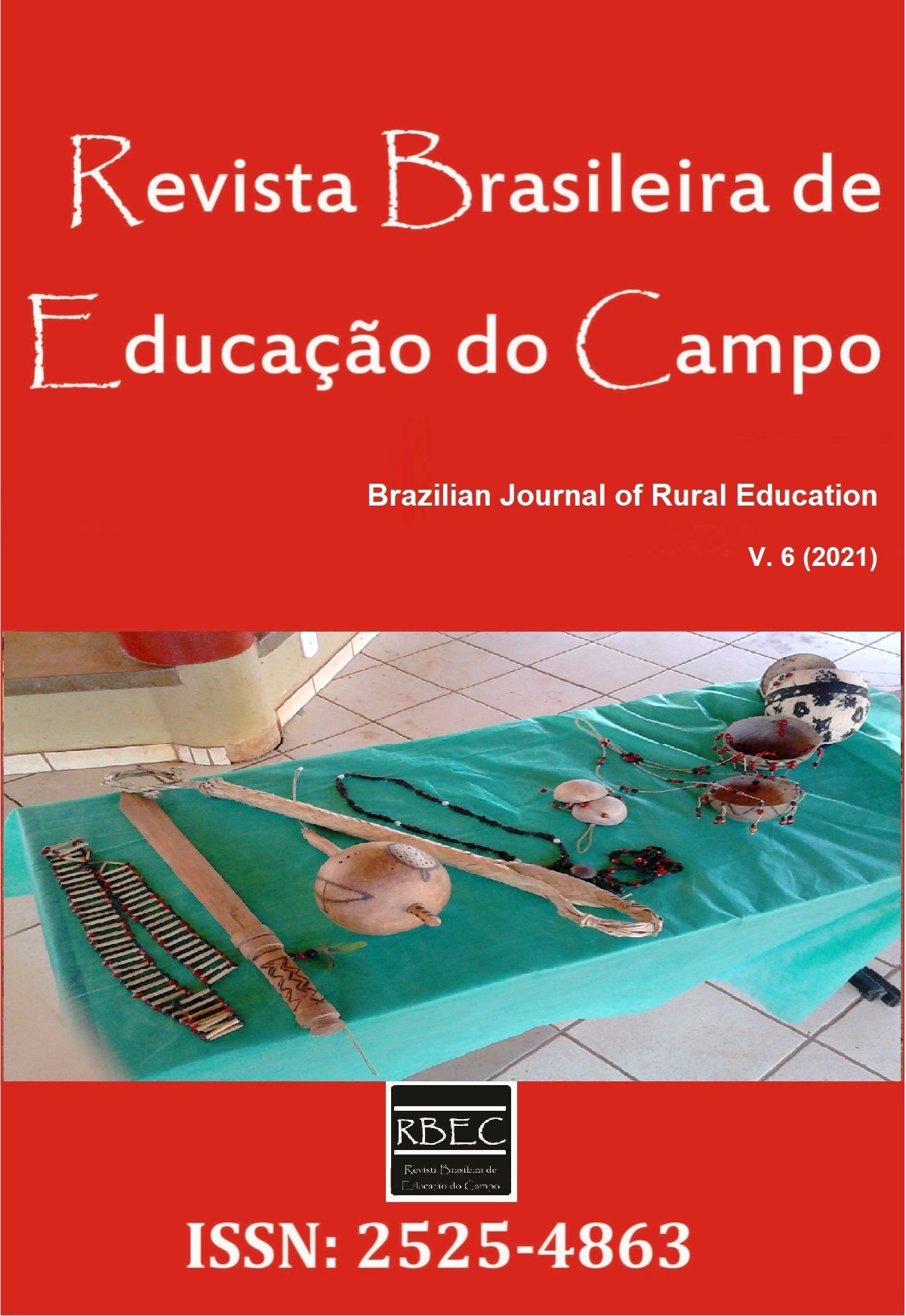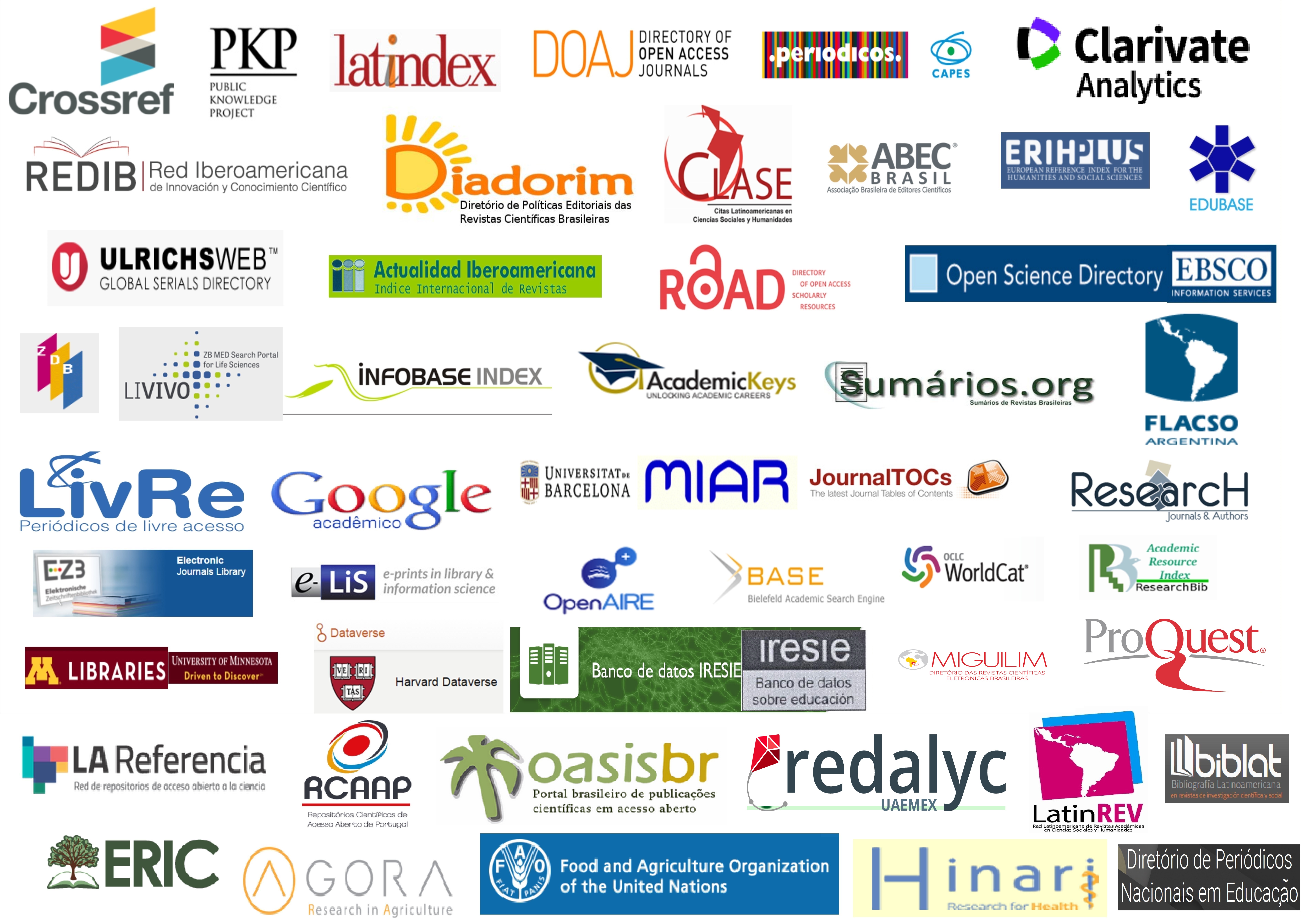O Cinema e sua dimensão estético-pedagógica: Bacurau e a Lógica Exúlica
DOI:
https://doi.org/10.20873/uft.rbec.e12372Resumo
O artigo “O Cinema e sua dimensão estético-pedagógica: Bacurau e a Lógica Exúlica” tem como objetivo expressar a dimensão estético-pedagógica do cinema, atingindo muitos tecidos sociais por ser uma estrutura que permite uma ação contínua na produção da subjetividade e na formação do gosto e do interesse de seus agentes consumidores, por meio das representações e representatividades possíveis. Utilizamos como metodologia a Lógica Exúlica, de Souza (2016), para compreender as relações entre coletividade, infância, as marcações de gênero, a compreensão de ‘outro’ e a cidade, centralizando o saber na encruzilhada. Esta interlocução forja possibilidades de rompimento com a colonialidade do poder, viabilizando circularidade de saberes, que em si já propõe uma quebra com o raciocínio cartesiano que se baseia em uma construção imperialista, colonial, que privilegia: o eurocentrismo, em detrimento das cosmopercepções africanas, afrodiaspóricas e indígenas; o adultocentrismo, desconsiderando os saberes infantis e as práticas possíveis dos idosos. Mostrando-se, dessa forma, com um viés racista, utilitarista e capitalístico. É na retirada do ou, para o acréscimo do e, na valorização da somatória, que se observa que não há essa ordem de importância que o euro-hétero-macho-autoritário, de Prudente (2019), propõe.
Palavras-chave: dimensão estético-pedagógica, lógica exúlica, infâncias, bacurau, saber na encruzilhada.
Cinema and its aesthetic-pedagogical dimension: Bacurau and the Exulic Logic
ABSTRACT. The article “Cinema and its aesthetic-pedagogical dimension: Bacurau and the Exulic Logic” aims to express the aesthetic-pedagogical dimension of cinema, reaching many social fabrics for being a structure that allows a continuous action in the production of subjectivity and in the formation of taste and interest of its consuming agents, through possible representativeness and representation. We use the Exulic Logic as a methodology Souza (2016) to understand the relationships between collectivity, childhood, gender markings, the understanding of 'the other' and the city, centralizing knowledge at the crossroads. This dialogue forges possibilities of breaking away from the coloniality of power, enabling circularity of knowledge, which in itself already proposes a break with Cartesian reasoning, which is based on an imperialist, colonial construction that privileges: Eurocentrism to the detriment of African, Aphrodiasporic and indigenous cosmoperceptions; adultcentrism, disregarding children's knowledge and the possible practices of the elderly, thus, with a racist, utilitarian and capitalistic bias. It is in the removal of or, for the addition of and, in the valuation of the sum, that it is observed that there is no such order of importance that the Euro-straight-male-authoritarian Prudente (2019) proposes.
Keywords: aesthetic-pedagogical dimension, exulic logic, childhoods, bacurau, knowledge at the crossroads.
El cine y su dimensión estético-pedagógica: Bacurau y la lógica Exulic
RESUMEN. El artículo “El cine y su dimensión estético-pedagógica: Bacurau y la lógica Exulic” pretende expresar la dimensión estético-pedagógica del cine por ser una estructura que permite una acción continua en la producción de subjetividad y en la formación del gusto e interés de sus agentes consumidores, a través de posibles representaciones y representatividad. Utilizamos la Lógica Exulic como metodología Souza (2016) para entender las relaciones entre colectividad, infancia, marcas de género, la comprensión del ‘otro’; y la ciudad, centralizando el conocimiento en la encrucijada. Esta interlocución forja posibilidades de ruptura con la colonialidad del poder, posibilitando la circularidad del conocimiento, que en sí misma ya propone una ruptura con el razonamiento cartesiano que se fundamenta en una construcción imperialista, colonial, que privilegia: Eurocentrismo en detrimento de las cosmopercepciones africanas, afrodiaspóricas e indígenas; adultcentrismo, desconociendo los conocimientos de los niños y las posibles prácticas de los ancianos, mostrándose así con un sesgo racista, utilitario y capitalista. Es en la eliminación de o, por la suma de y, en la valoración de la suma, que se observa que no existe tal orden de importancia que propone el euro-heterosexual-masculino-autoritario Prudente (2019).
Palabras clave: dimensión estético-pedagógica, lógica exúlica, infancia, bacurau, conocimiento en la encrucijada.
Downloads
Referências
Abdala, V. (2019). Quatro municípios concentram 11,8% da população brasileira. Recuperado de: https://agenciabrasil.ebc.com.br/geral/noticia/2019-08/quatro-municipios-concentram-118-da-populacao-brasileira
Adorno, T. W., & Horkheimer, M. (1947). Dialética do Esclarecimento. Recuperado de: https://nupese.fe.ufg.br/up/208/o/fil_dialetica_esclarec.pdf
Almeida, R., & Zmaberlan, C. (2020). Bacurau: Afirmação simbólica de um povo a se inventar. In Prudente, C. L., & Silva, Batista, P. V. (Orgs.). 16º Mostra Internacional de Cinema Negro – Educação, Cultura e Semiótica (pp. 487-509). São Paulo, SP: Jandaíra.
Azevedo, A. R. (2011). Inclusão digital e competência informacional: proposta de abordagem metodológica para estudo de usuários da informação digital. Múltiplos Olhares em Ciência da Informação, 1(1). Recuperado de https://periodicos.ufmg.br/index.php/moci/article/view/16923
Bacurau. (2019). Direção: Juliano Dornelles, Kleber Mendonça Filho. Pernambuco: Vitrine Filmes, 2019 (131min).
Butler, J. (2019). Vida Precária – Os poderes da luta e da violência. Belo Horizonte, MG: Autêntica Editora.
Dondis, A. D. (1991). Sintaxe da linguagem visual. São Paulo, SP: Martins Fontes.
Frei B. (1997, 23 julho). Paulo Freire: a leitura do mundo. Correio Riograndense.s/p.
Freire, P. (2013). Alfabetização: leitura do mundo, leitura da palavra. Rio de Janeiro, RJ: Paz e Terra.
Freire, P. (1971). Extensão ou comunicação? Rio de Janeiro, RJ: Paz e Terra.
Freire, P. (1991). A educação na cidade. São Paulo, SP: Cortez.
Freire, P. (2014). Pedagogia da tolerância. 3. Rio de Janeiro, RJ: Paz e Terra.
Huizinga, J. (2010). Homo ludens: o jogo como elemento da cultura. São Paulo, SP: Perspectiva.
Mbembe, A. (2018). Necropolítica. São Paulo, SP: N-1.
Nascimento, A. (2019). O quilombismo: documentos de uma militância Pan-Africanista. São Paulo, SP: Perspectiva.
Palma, A., Assis, M. R., & Vilaça, (2019). Bacurau: Uma metáfora do Brasil Atual. Revista Práxis, 11(22), 31-36.
Prudente, C. L. (2019). A dimensão pedagógica da alegoria carnavalesca no cinema negro enquanto arte de afirmação ontológica da africanidade: pontos para um diálogo com Merleau-Ponty. In Prudente, C. L., & Silva, D. C. (Orgs.). A dimensão pedagógica do cinema negro – Aspectos de uma arte para a afirmação ontológica do negro brasileiro: o olhar de Celso Prudente (pp. 113-136). São Paulo, SP: Anita Garibaldi.
Rufino, L., & Simas, L. A. (2018). Fogo no Mato: a ciência encantada das macumbas. Rio de Janeiro, RJ: Mórula.
Rufino, L. (2019). Pedagogia das encruzilhadas. Rio de Janeiro, RJ: Mórula Editorial. https://doi.org/10.24065/2237-9460.2019v9n4ID1012
Santos, B. S. (2007). Para além do pensamento abissal: das linhas globais a uma ecologia de saberes. Novos Estudos CEBRAP 11(79), 71-94. https://doi.org/10.1590/S0101-33002007000300004
Senghor, L. S. (1990). Oeuvre poétique. Paris: Éditions du Seuil.
Sirihal Duarte, A. B. (2007). Informação, sociedade e inclusão digital. In Reis, A. S., & Cabral, A. M. (Orgs.) Informação, Cultura e Sociedade: interlocuções e perspectivas (pp. 101-121). Belo Horizonte, MG: Novatus.
Souza, E. L., & Carvalho, A. F. (2021). O erê e o devir-criança negro: outros possíveis em tempos necropolíticos. Childhood & Philosophy, 17, 01-28. https://doi.org/10.12957/childphilo.2021.56331.
Souza, E. G. L. (2016). Experiências de infâncias com produções de culturas no Ilê Axé Omo Oxé Ibá Latam (Tese de Doutorado). Universidade Federal de São Carlos, São Carlos.
Souza, E., & Garcia, A. Jr. (no prelo). Brinco, logo me livro! Livro.
Publicado
Como Citar
Edição
Seção
Licença
Proposta de Aviso de Direito Autoral Creative Commons
1. Proposta de Política para Periódicos de Acesso Livre
Autores que publicam nesta revista concordam com os seguintes termos:
a. Autores mantém os direitos autorais e concedem à revista o direito de primeira publicação, com o trabalho simultaneamente licenciado sob a Licença Creative Commons Attribution que permite o compartilhamento do trabalho com reconhecimento da autoria e publicação inicial nesta revista.
b. Autores têm autorização para assumir contratos adicionais separadamente, para distribuição não-exclusiva da versão do trabalho publicada nesta revista (ex.: publicar em repositório institucional ou como capítulo de livro), com reconhecimento de autoria e publicação inicial nesta revista.
c. Autores têm permissão e são estimulados a publicar e distribuir seu trabalho online (ex.: em repositórios institucionais ou na sua página pessoal) a qualquer ponto antes ou durante o processo editorial, já que isso pode gerar alterações produtivas, bem como aumentar o impacto e a citação do trabalho publicado (Veja O Efeito do Acesso Livre).
Proposal for Copyright Notice Creative Commons
1. Policy Proposal to Open Access Journals
Authors who publish with this journal agree to the following terms:
A. Authors retain copyright and grant the journal right of first publication with the work simultaneously licensed under the Creative Commons Attribution License that allows sharing the work with recognition of its initial publication in this journal.
B. Authors are able to take on additional contracts separately, non-exclusive distribution of the version of the paper published in this journal (ex .: publish in institutional repository or as a book), with an acknowledgment of its initial publication in this journal.
C. Authors are permitted and encouraged to post their work online (eg .: in institutional repositories or on their website) at any point before or during the editorial process, as it can lead to productive exchanges, as well as increase the impact and the citation of published work (See the Effect of Open Access).














